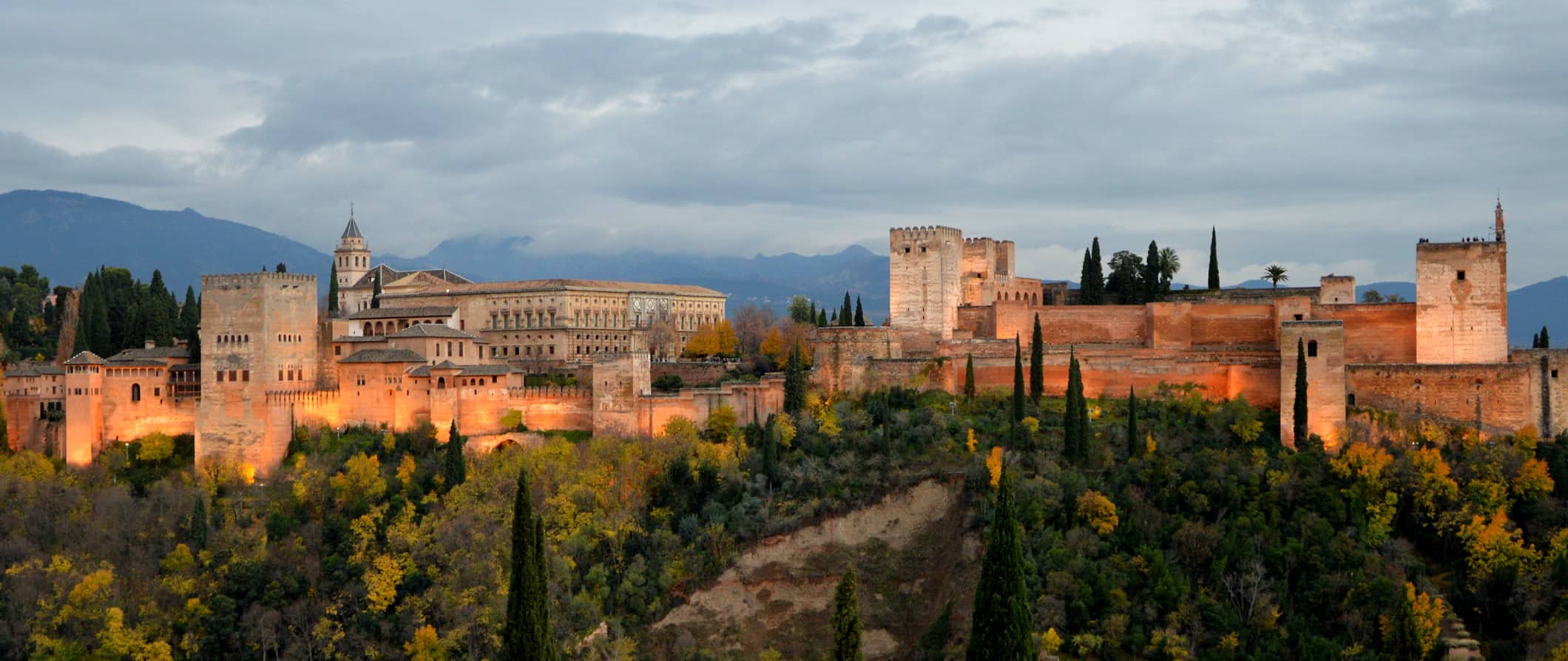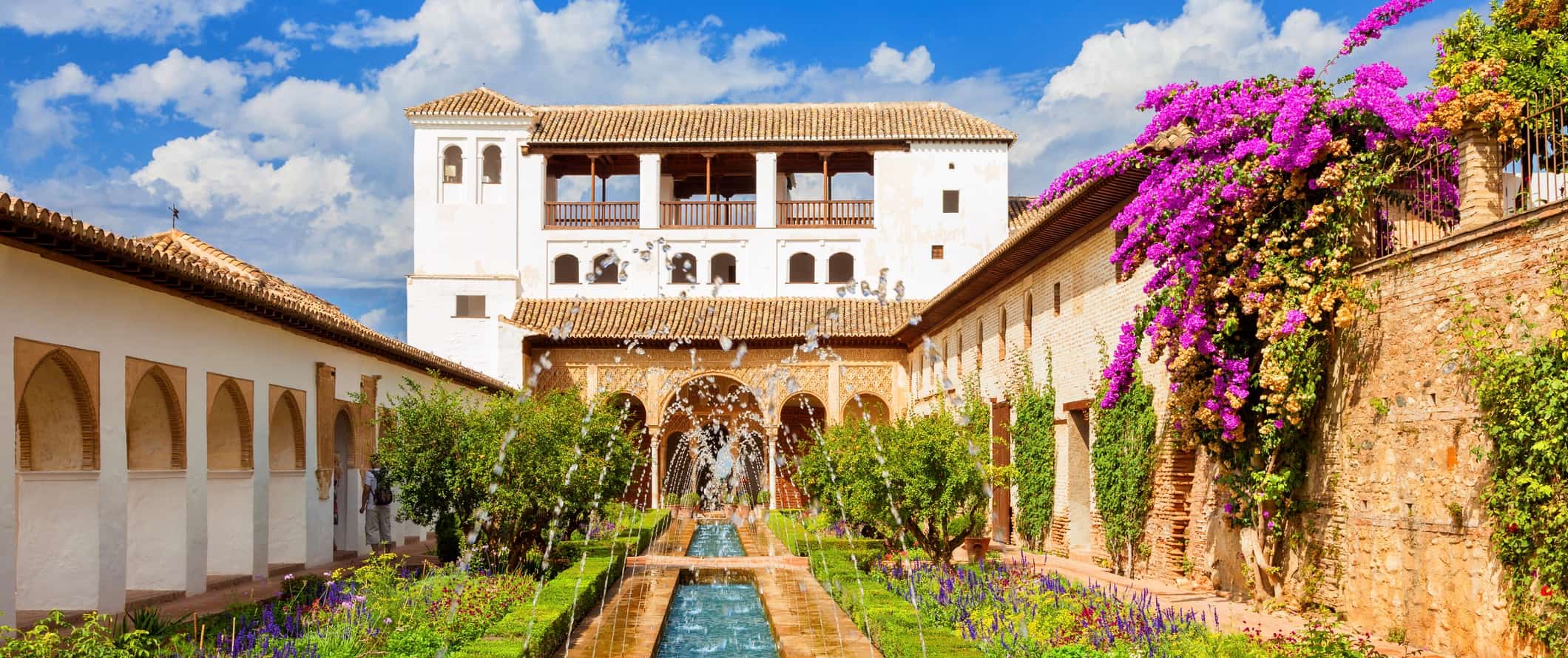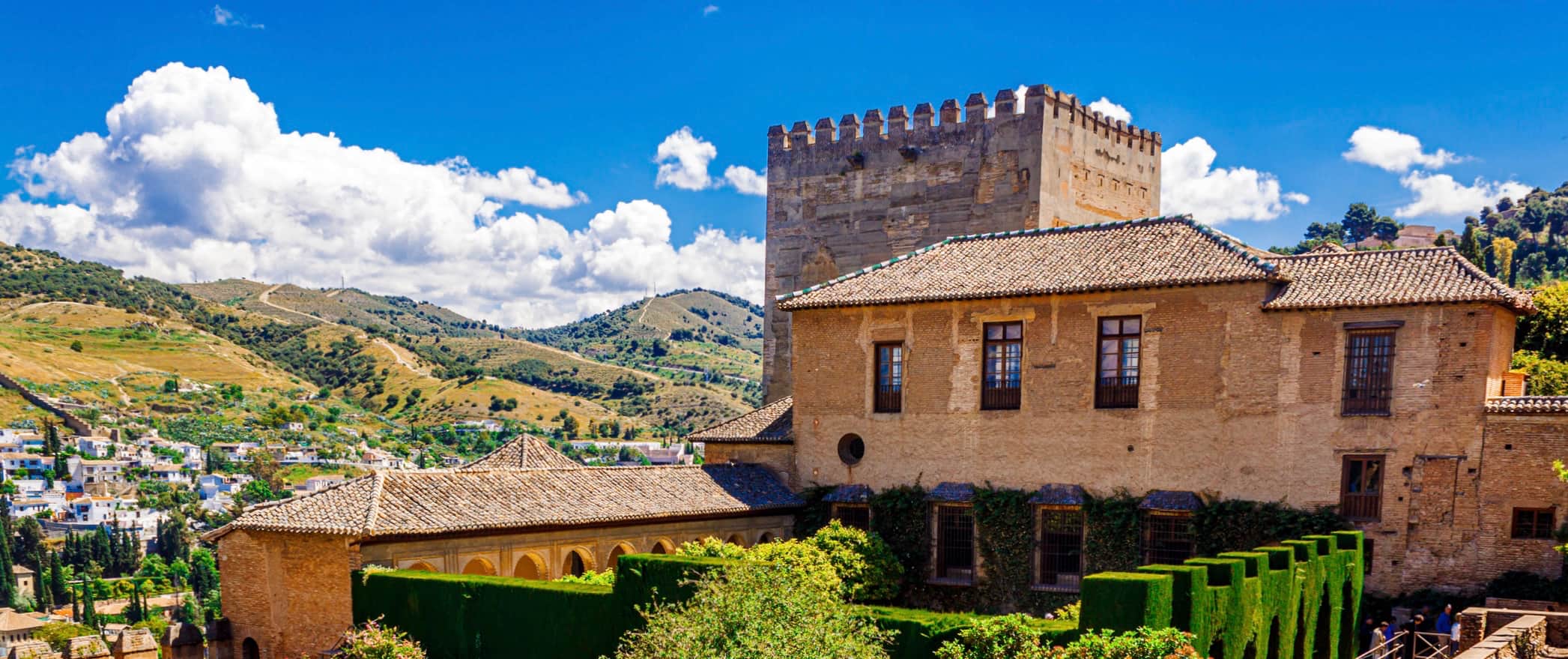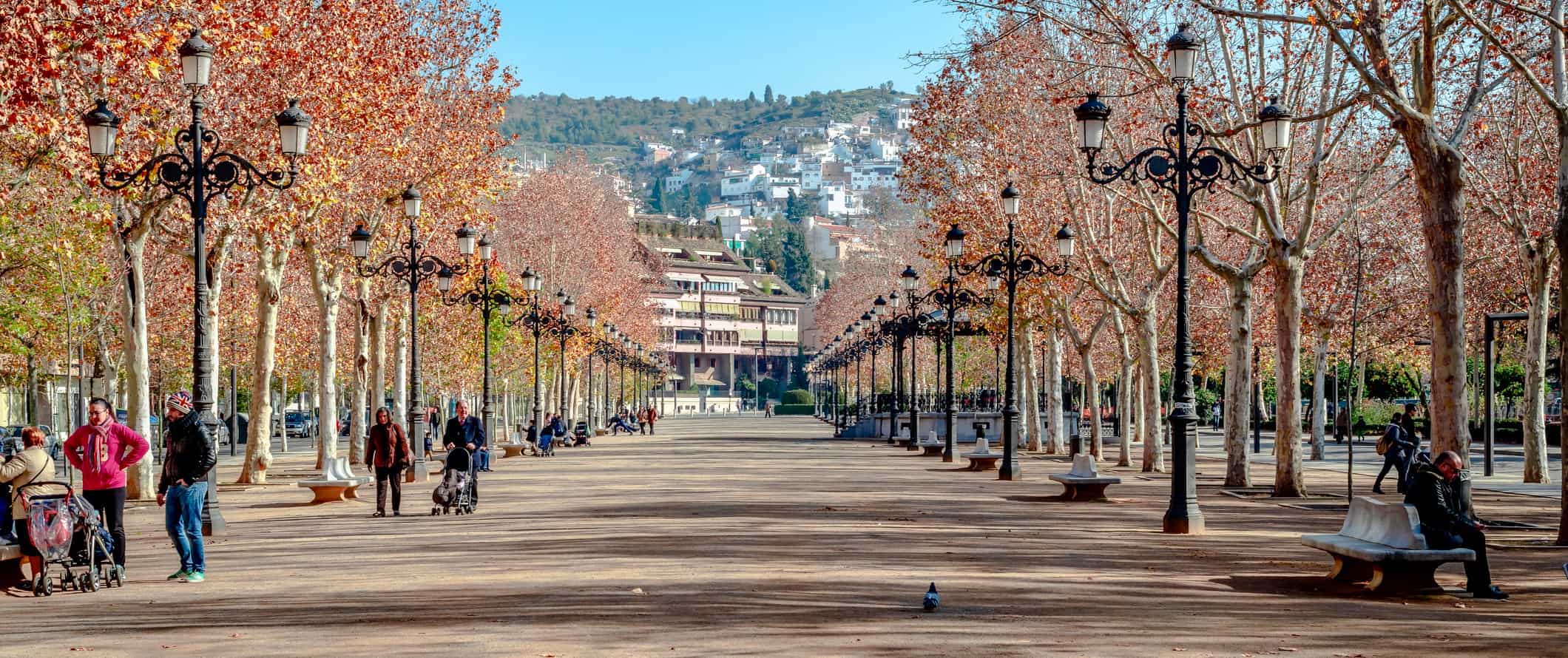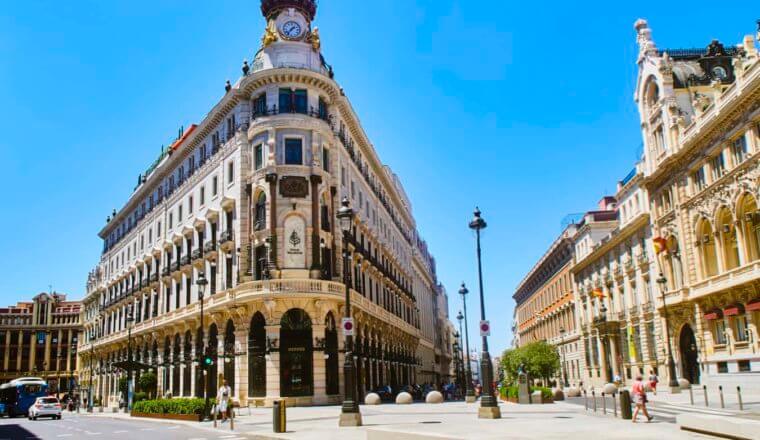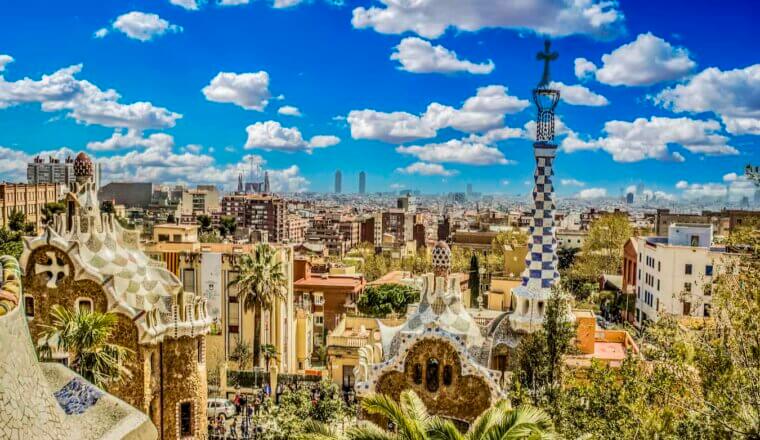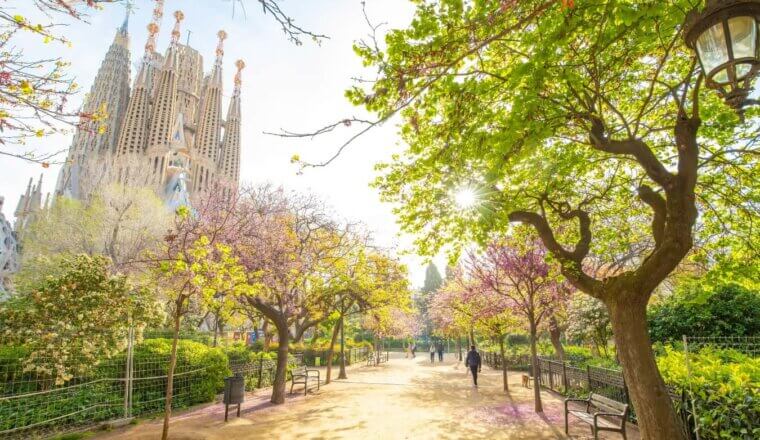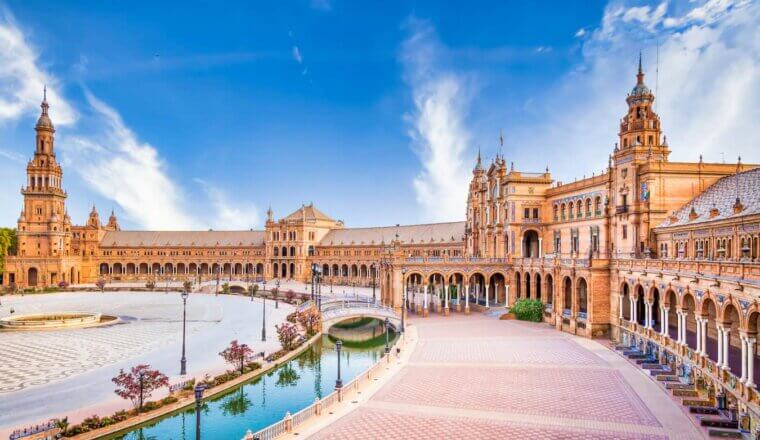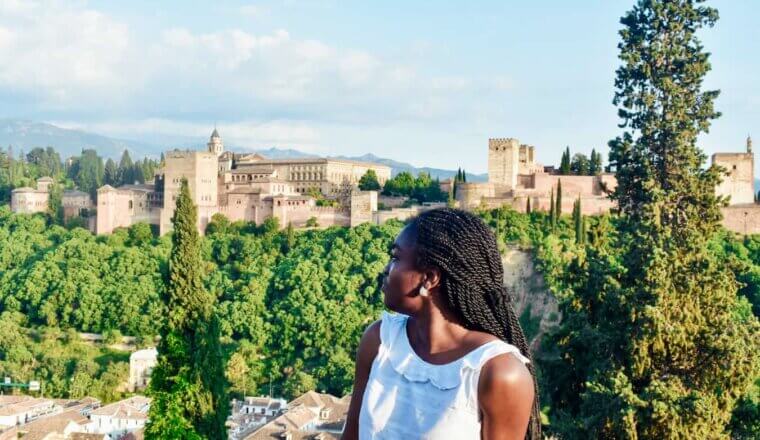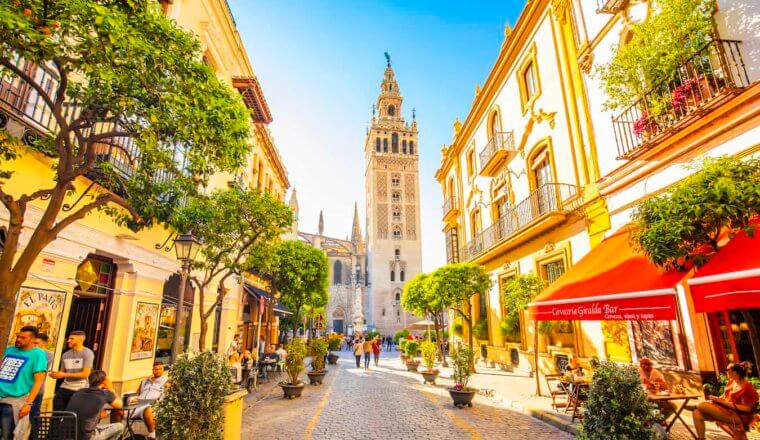Granada is a city rich with history, spectacular architecture, and a mix of cultures and influences dating back to the Romans and the Moors. Here, culture, art, and architecture from North Africa and Europe collide.
I loved my time in Granada. There are countless museums, monuments, and statues worth seeing and exploring, which are perfect for the budget-minded traveler. And, with its perfect weather and incredible food scene, Granada just punches above its weight. I’ve never met a traveler who didn’t love it here.
This travel guide to Granada will show you how to eat well, save money, and see the best sights the city has to offer.
Table of Contents
Top 5 Things to See and Do in Granada
1. Explore the Sierra Nevada
This is one of the highest mountain ranges in Europe, reaching heights of 3,478 meters (11,410 feet). It can be explored as a day trip but is better as an overnight excursion. There are trails for short, medium, and long hikes. Some of the more popular trails are Caharros de Monachil (moderate), Cahorros Rio Monachil (easy), and the Three Bridges Loop (hard). In the winter, you can hit the slopes (lift passes cost around 60 EUR). Some of the more popular trails are Caharros de Monachil (moderate), Caharros Rio Monachil (easy), and the Three Bridges Loop (hard). Even if you don’t ski, you can take a gondola ride from the Pradollano to Borreguiles to enjoy incredible views (21 EUR).
2. Visit the Alhambra Palace
The Alhambra is a UNESCO World Heritage palace and a fortress dating to the 13th century. It’s one of the best-preserved historic Islamic palaces, built by the Moors on the ruins of a Roman fort. It’s a must see for history or architecture lovers. Construction started in 1238 by Muhammad I Ibn al-Ahmar, founder of the Emirate of Granada, and when it was complete, Grenada became the royal residence and court. Alhambra is the second-most visited site in Europe, so it’s a good idea to buy your ticket in advance. Admission is 19 EUR. Plan to spend a few hours here.
3. Snap photos at Paseo de los Tristes
For a fantastic view of the Alhambra, walk down to the Paseo de los Tristes (Passage of the Mourners), which follows the River Darro. The road got its name of the funeral processions that used to pass along the route on the way to burial grounds, but today it’s a popular spot to take photos.
4. Watch a Flamenco Show
Flamenco is an important cultural experience intertwined with life in southern Spain. It is a style of folklore music featuring guitar, singing, and dancing that originated in southern Spain in the hills above Granada where the Roma settled after arriving in Spain. It’s now popular across the country. There are many small theaters and restaurants where you can catch a show for as little as 25 EUR. Some of the best spots are in the original venues called “tablaos” in the Sacromonte neighborhood, like Cuevas los Tarantos.
5. Admire the Granada Cathedral
The Granada Cathedral has a stunning white-and-gold interior that reflects the historical power and wealth of the Spanish kingdom. The cathedral was built during the reign of Queen Isabella in the 16th century (construction began in 1526 on the site of the Great Mosque and took 35 years). It’s considered a Spanish Renaissance masterpiece, even though it features some Gothic elements, such as the facade and floor plan. Admission is 5 EUR.
Other Things to See and Do in Granada
1. Take a free walking tour
It’s no secret that one of the first things I do when I arrive in a new city is take a free walking tour. It’s a great way to see the main sights, learn some history and culture, and have a local expert answer all my questions. Both Guru Walk and Walking Granada offer a variety of free tours. Just be sure to tip your guide at the end!
2. Take in sunset views at the Mirador de San Nicolás
Located in the cute Albaicín neighborhood of Granada, the Mirador de San Nicolás is the best spot in the city for a panoramic viewpoint, especially at sunset. With incredible views of the Alhambra and the Sierra Nevada, it’s a popular spot but worth the crowd.
3. Check out Casa del Chapiz
Built in the Moorish architectural style, these two 14th-century mansions are connected by an archway, forming one giant complex. The building includes a library and central courtyard with a colorful garden. Since 1932, the building has been home to the Granada School of Arabic Studies. Like many places in Granada, it’s another great spot to take in a unique view of the Alhambra in the distance. Admission is 2 EUR.
4. Soak in a hammam
There are several hammams (bathhouses) in Granada. These are modern spas reconstructed in the style of ancient Moorish baths that were once common across Granada. Entry is usually around 30 EUR but can get as high as 100 EUR or more if you want to add spa treatments like massages or skincare treatments. Some of the most popular are Hammam Al Andalus and Al-Haram Hammam.
5. Visit El Bañuelo
Lying at the base of the Alhambra, in the oldest public building in Granada is El Bañuelo. It’s one of the best-preserved Moorish bathhouses, and is now a museum. The complex dates to the 11th century, and was used as bathhouse until the 16th century. See parts of the original architecture that includes octagonal & star-shaped skylights that cast intricate light patterns around the building. Admission is part of the Monumentos Andaluscíes (Andalusian monument) ticket (7 EUR).
6. Wander through the Albaicín
The Albaicín is a UNESCO World Heritage in the historic Moorish quarter of the city and, which is the oldest neighborhood of Granada. Spend an hour or two to walk through its narrow, winding streets and whitewashed buildings. The stroll takes you back in time to the Nasrid Kingdom of Granada in the 13th century (this was the last independent Muslim state in Europe). This is one of the four monuments and historical sites in the Albaicín, which includes the Bañuelo, Casa Morisca, Palacio de Dar al-Horra, and Corral del Carbón. The combined Andalusian monument ticket provides entrance to all four for 7 EUR. On Sundays, entry is free.
7. Take a cycling tour
There are several bike companies running day tours around Granada’s top sights, and this is a great way to see the city and surrounding area if you love biking. Additionally, since Andalusia is a popular cycling destination, many enthusiasts actually cycle between cities on multi-day excursions. A guided e-bike tour around the city costs 50 EUR while a guided 7-day tour between Seville and Granada (a distance of around 250 kilometers) can cost up to 1,800 EUR per person.
8. Visit the Monasterio de San Jeronimo
This 16th-century monastery is a must see given its impressive Renaissance-era architecture. There’s a large nave and beautiful stained glass windows, but the most impressive part is the detailed painting of the interior in Spanish Baroque style. The first church in the world consecrated to the Immaculate Conception of Mary, it’s incredibly ornate, and I highly recommend a visit. The monastery is still in use but is open for visitors. Admission is 6 EUR.
9. Hang out in Plaza Nueva
Just a short walk from the Granada Cathedral, Plaza Nueva is a bustling pedestrian plaza with a lot of restaurants, bars, and shops. Surrounded by classic Andalusian buildings, including the Royal Chancellery and the House of Pisa, it’s a good spot to sit and people-watch or grab a snack of fresh fruit from any of the market vendors.
10. Shop & snack at Mercado San Agustín
One of the municipal markets in Granada, the Mercado San Agustín is a convenient spot to shop for fresh fruit and vegetables. In the central area near Granada Cathedral and Plaza Nueva, the indoor covered market also has some small tapas stalls where you can buy meat, cheese, olives, and other light foods for a cheap but filling lunch. There is seating indoors and there’s also an air conditioned terrace.
11. Take a food tour
Granada is very much a foodie city; the rich fusion and blend of Spanish and Arabic cultures makes for a unique local cuisine. Spain Food Sherpas offer a nearly 4-hour tour through Granada’s best food spots with tapas and wine tastings and a full meal included. You’ll also learn about the all the different cultural influences that shaped food over the last several hundred years. It’s a must for any die-hard foodies. Standard food tours cost 69 EUR while their Flamenco & Tapas tour is 87 EUR.
12. Explore the Generalife
The gardens of the Alhambra really deserve a mention of their own. Meaning “Garden of the Architect,” the Generalife can be found on Cerro del Sol (Hill of the Sun), next to the Alhambra, and I highly suggest adding this spot on to your visit to the Alhambra. It’s a series of large gardens and a few understated buildings, some of which were built in the Moorish period. The Generalife has several levels and a patio but is most famous for its numerous plants and beautiful water features. Admission is 11 EUR for the gardens and is included in the 19 EUR Alhambra admission fee. You can visit at night for 7 EUR.
13. Visit the Royal Chapel
The Royal Chapel is the final resting place of Ferdinand II and Isabella I (Spanish monarchs from the 15th century). Joanna I and Philip I (their successors) plus Michael, Prince of the Asturias are also buried here in a separate tomb. Although the chapel, the largest in Spain, is physically connected to the cathedral, it’s considered a separate building. There are several parts that make up the chapel, including four adjacent chapels that form a Latin cross, a nave with a Gothic ribbed vault, and a crypt. There is also a museum. Admission is 6 EUR.
For more information on other cities in Spain, check out these guides:
Granada Travel Costs
Hostel prices – There are dozens of hostels in Granada, so you shouldn’t have too much trouble finding affordable accommodation. In the off-season, dorm rooms cost around 25-35EUR and private rooms can range from 50-150 EUR. In peak season, prices average on the higher end.
For those traveling with a tent, camping is available outside the city. A simple plot to pitch a tent without electricity starts at 11 EUR.
Budget hotel prices – Hotel costs, including budget hotels, have had big jumps in price the last few years but are still relatively affordable compared to other parts of Spain. Budget hotels start around 70 EUR per night for a double room in offseason, but can cost closer to the 150-200 EUR range in summer without advance booking. Even in the budget range, there are many nice hotels available — some even have pools and include free breakfast.
There are several affordable Airbnb options in Granada. A private room starts at 30 EUR per night but averages closer to 60 EUR. An entire home/apartment goes for at least 85 EUR per night (though they average closer to 100-120 EUR per night).
Food – Spain has a strong food culture, where meals can last hours and dinner often isn’t served until after 8pm. Each region in the country has its own local dishes and food culture, and Andalucía is no exception. Local favorites in Granada include fried eggplant with honey, habas con jamón (sautéed beans and ham), gazpacho, remojón granaíno (a cod salad with oranges), and churros.
You can eat very cheap in Granada, thanks to the tapas bars that offer free food when you order drinks. Cheap tapas and meals are available at small restaurants for around 12-15 EUR. If you want wine, expect to spend about 25-30 EUR per meal.
Prices for main dishes start at 25 EUR for traditional cuisine at sit down restaurants while set menus at more fine dining establishments range anywhere between 40-45 EUR for a main dish.
Fast food (think McDonald’s) is around 9 EUR for a combo meal. A latte or cappuccino is about 2 EUR, and so is bottled water. A single glass of wine or a beer is usually just a few euros.
If you’re cooking your own food, a week’s worth of groceries costs 50-60 EUR. This gets you basic staples like pasta, rice, seasonal produce, and some meat. For local foods and fresh produce, check out the local municipal markets and produce vendors in the plaza.
Backpacking Granada Suggested Budgets
If you’re backpacking Granada, expect to spend about 90 EUR per day. This budget covers staying in a hostel dorm, taking public transit, cooking most of your meals, limiting your drinking, and sticking to mostly free activities like free walking tours, lounging in the parks, and hiking. If you plan on drinking a lot, I’d add another 15-20 EUR to your daily budget.
On a mid-range budget of 200 EUR per day, you can stay in a private Airbnb, eat out for most meals at cheap tapas restaurants and street food stalls, enjoy a couple drinks, take the occasional taxi to get around, and do more paid activities like visiting the Alhambra or watching a Flamenco performance.
On a “luxury” budget starting just over 300 EUR per day, you can stay in a hotel, eat and drink whatever you want, rent a car, take taxis, and do any tours and activities. This is just the ground floor for luxury though. The sky is the limit!
Granada Travel Guide: Money-Saving Tips
Food, drinks, and tours can add up quickly in Granada if you aren’t watching your spending. That said, there’s still a lot of free things to do in the city and affordable food. Here’s my suggestions on saving money in Granada:
- Eat cheap – Many casual dining restaurants and bars give you free tapas when you buy drinks (most have a limit on how many you can have). It’s common to barhop to take full advantage of the free tapas. Order one drink at a place and enjoy some snacks before heading to another.
- Get the Granada Card – If you plan on taking full advantage of the tourist activities and attractions in Granada, the Granada Card offers discounted access to 12 different monuments. It also provides 9 trips on city busses. There are 4 different Granada Cards available depending on the length of your stay and how much you want to see. Cards start at 47 EUR and can be purchased online. It will definitely save you money if you are doing a lot of sightseeing.
- Buy your own alcohol – While drinks are not overly expensive at bars and restaurants in Granada, you can save yourself a lot of money if you buy your own beer and wine from the store. Many hostels have large courtyards, and some even have swimming pools, so it’s cheaper to hang out in your hostel than at a bar.
- Stay with a local – If you’re traveling on a budget, Couchsurfing is a great way to save money on accommodation while also getting some insight from the locals. While hostels aren’t too expensive in the city, this is still the best way to save money while getting some insider tips and advice.
- Take a free walking tour – This is one of my favorite ways to get to know a new place, and you can’t beat the price! Just don’t forget to tip your guide at the end!
- Enjoy the outdoor public spaces – Granada’s Plaza Nueva is a hotspot of activity day and night. Between the bars, restaurants and shops that line the plaza, and the vendors and street buskers, it’s a great spot for free entertainment or a spot to grab a coffee in the afternoon. The people-watching is excellent and the side streets around it offer some great opportunities to wander and explore.
- Bring a water bottle – The tap water here is safe to drink so bring a reusable water bottle to save money and reduce your plastic use. LifeStraw is my go-to brand as their bottles have built-in filters to ensure your water is always clean and safe.
Where to Stay in Granada
Granada has a lot of affordable hostels (some of which even have small rooftop pools) as well as budget hotel options. Here are my favorite places to stay in Granada:
How to Get Around Granada
Public transportation – There are multiple bus lines operating in Granada that cover the city. A single fare costs 1.40 EUR. The Credibus travel card can be bought on some buses or from many of the sidewalk kiosks and pre-loaded with money. The pre-loaded travel card is available for 5, 10, or 20 EUR which then cuts the price of a bus ticket under a EUR per trip. If you’re in Granada for a while, a month pass costs 21 EUR and includes unlimited travel.
Bicycle – Granada does not have a city bike system like Malaga or Seville, but standard and e-bike rentals are available from a number of different shops for around 30 EUR per day.
Taxis – Taxis in Granada start around 4 EUR with an additional 1.15 EUR per kilometer. Skip the taxis if you can as they add up quickly!
Ridesharing – Uber is available in Granada, but like taxis, it adds up fast. Stick to the bus as much as possible to save money.
Car rental – Car rentals can be found for as little as 25 EUR per day for a multi-day rental, however, you don’t need a car to get around the city. Unless you’re going to explore the surrounding region, skip the car rental. For the best rental car deals, use Discover Cars
When to Go to Granada
Granada has a higher altitude than other Andalusian cities like Malaga or Seville, so it doesn’t get quite as hot but it still gets hot. July and August are the hottest months when temperatures can be as high as 35°C (94°F). This is when the city is at its liveliest and there are lots of events that range from music festivals in the nearby cities to cultural celebrations. And while all of Spain is known for late-night activities, cities like Granada and other southern towns are especially vibrant on summer nights after the temperatures cool down.
Personally, I like May or June the best when visiting. That’s when the city’s many gardens are in full bloom. Semana Santa holy week (usually in April) isn’t as popular in Granada as it is in nearby Seville, but it still draws in large crowds for the colorful procession. If you prefer hiking or looking to spend most of your days outdoors, this is the best time. It’s a great time to visit as long as you can book your accommodation early.
The winter months (December-February) are wet and cold with temperatures hovering between 2°C and 13°C (35-56°F). For those that ski, the Sierra Nevada is an easy day trip or weekend trip. And if you don’t mind the rain, sites like the Alhambra are much less crowded (except on holiday weeks like Christmas). While it’s still a fine time to visit, I’d aim for the summer or shoulder season as that’s when the city is liveliest.
How to Stay Safe in Granada
Granada is a safe city and violent crime is rare. However, as with other Spanish cities, pickpocketing and petty theft, especially in the major tourist areas at night, are major problems. There are also some tourist scams, especially because many of the tourist attractions require tickets in advance. Make sure you buy your ticket from a reputable provider (online or at the official ticket counters) and avoid anyone who offers you tickets outside of these locations. You can read more about common travel scams to avoid here.
Some people report feeling unsafe in the Albaicín area at night, though as long as you stick to the main streets and avoid wandering dark roads alone, you should be fine.
Overall, make sure you keep your valuables out of sight and secure when you’re out and about, and don’t flash any cash or valuables. The pickpockets here are fast! Don’t leave your bags or phones on tables or cafes, especially in outdoor seating areas.
Solo female travelers should feel safe here. However, the standard precautions apply (don’t leave your drink unattended at the bar, don’t walk around intoxicated at night, etc.). You can visit any one of the numerous solo female travel blogs for specific tips as they will be able to provide advice. In addition, you can look for female-only dorm rooms in many hostels.
If you do experience an emergency, dial 112 for assistance.
Always trust your gut instinct. Forward your itinerary along to loved ones so they know where you are.
The most important piece of advice I can offer is to purchase good travel insurance. Travel insurance protects you against illness, injury, theft, and cancellations. It’s comprehensive protection in case anything goes wrong. I never go on a trip without it as I’ve had to use it many times in the past. You can use the widget below to find the policy right for you:
Granada Travel Guide: The Best Booking Resources
These are my favorite companies to use when I travel. They consistently have the best deals, offer world-class customer service and great value, and overall, are better than their competitors. They are the companies I use the most and are always the starting point in my search for travel deals.
- Skyscanner – Skyscanner is my favorite flight search engine. They search small websites and budget airlines that larger search sites tend to miss. They are hands down the number one place to start.
- Hostelworld – This is the best hostel accommodation site out there with the largest inventory, best search interface, and widest availability.
- Booking.com – The best all around booking site that constantly provides the cheapest and lowest rates. They have the widest selection of budget accommodation. In all my tests, they’ve always had the cheapest rates out of all the booking websites.
- HostelPass – This new card gives you up to 20% off hostels throughout Europe. It’s a great way to save money. They’re constantly adding new hostels too. I’ve always wanted something like this and glad it finallt exists.
- Get Your Guide – Get Your Guide is a huge online marketplace for tours and excursions. They have tons of tour options available in cities all around the world, including everything from cooking classes, walking tours, street art lessons, and more!
- The Man in Seat 61 – This website is the ultimate guide to train travel anywhere in the world. They have the most comprehensive information on routes, times, prices, and train conditions. If you are planning a long train journey or some epic train trip, consult this site.
- Trainline – When you’re ready to book your train tickets, use this site. It streamlines the process of booking trains around Europe.
- Rome2Rio – This website allows you to see how to get from point A to point B the best and cheapest way possible. It will give you all the bus, train, plane, or boat routes that can get you there as well as how much they cost.
- FlixBus – Flixbus has routes between 20 European countries with prices starting as low 5 EUR! Their buses include WiFi, electrical outlets, a free checked bag.
- SafetyWing – Safety Wing offers convenient and affordable plans tailored to digital nomads and long-term travelers. They have cheap monthly plans, great customer service, and an easy-to-use claims process that makes it perfect for those on the road.
- LifeStraw – My go-to company for reusable water bottles with built-in filters so you can ensure your drinking water is always clean and safe.
- Unbound Merino – They make lightweight, durable, easy-to-clean travel clothing.
- Top Travel Credit Cards – Points are the best way to cut down travel expenses. Here’s my favorite point earning credit cards so you can get free travel!
- BlaBlaCar – BlaBlaCar is a ridesharing website that lets you share rides with vetted local drivers by pitching in for gas. You simply request a seat, they approve, and off you go! It’s a cheaper and more interesting way to travel than by bus or train!
Granada Travel Guide: Related Articles
Want more info? Check out all the articles I’ve written on Spain travel and continue planning your trip:
